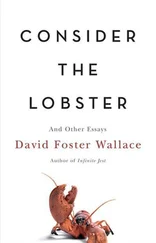Джек Лондон - Revolution, and Other Essays
Здесь есть возможность читать онлайн «Джек Лондон - Revolution, and Other Essays» — ознакомительный отрывок электронной книги совершенно бесплатно, а после прочтения отрывка купить полную версию. В некоторых случаях можно слушать аудио, скачать через торрент в формате fb2 и присутствует краткое содержание. Жанр: foreign_antique, foreign_prose, на английском языке. Описание произведения, (предисловие) а так же отзывы посетителей доступны на портале библиотеки ЛибКат.
- Название:Revolution, and Other Essays
- Автор:
- Жанр:
- Год:неизвестен
- ISBN:нет данных
- Рейтинг книги:5 / 5. Голосов: 1
-
Избранное:Добавить в избранное
- Отзывы:
-
Ваша оценка:
- 100
- 1
- 2
- 3
- 4
- 5
Revolution, and Other Essays: краткое содержание, описание и аннотация
Предлагаем к чтению аннотацию, описание, краткое содержание или предисловие (зависит от того, что написал сам автор книги «Revolution, and Other Essays»). Если вы не нашли необходимую информацию о книге — напишите в комментариях, мы постараемся отыскать её.
Revolution, and Other Essays — читать онлайн ознакомительный отрывок
Ниже представлен текст книги, разбитый по страницам. Система сохранения места последней прочитанной страницы, позволяет с удобством читать онлайн бесплатно книгу «Revolution, and Other Essays», без необходимости каждый раз заново искать на чём Вы остановились. Поставьте закладку, и сможете в любой момент перейти на страницу, на которой закончили чтение.
Интервал:
Закладка:
In Chicago there is a woman who toiled sixty hours per week. She was a garment worker. She sewed buttons on clothes. Among the Italian garment workers of Chicago, the average weekly wage of the dressmakers is 90 cents, but they work every week in the year. The average weekly wage of the pants finishers is $1.31, and the average number of weeks employed in the year is 27.85. The average yearly earnings of the dressmakers is $37; of the pants finishers, $42.41. Such wages means no childhood for the children, beastliness of living, and starvation for all.
Unlike the caveman, modern man cannot get food and shelter whenever he feels like working for it. Modern man has first to find the work, and in this he is often unsuccessful. Then misery becomes acute. This acute misery is chronicled daily in the newspapers. Let several of the countless instances be cited.
In New York City lived a woman, Mary Mead. She had three children: Mary, one year old; Johanna, two years old; Alice, four years old. Her husband could find no work. They starved. They were evicted from their shelter at 160 Steuben Street. Mary Mead strangled her baby, Mary, one year old; strangled Alice, four years old; failed to strangle Johanna, two years old, and then herself took poison. Said the father to the police: “Constant poverty had driven my wife insane. We lived at No. 160 Steuben Street until a week ago, when we were dispossessed. I could get no work. I could not even make enough to put food into our mouths. The babies grew ill and weak. My wife cried nearly all the time.”
“So overwhelmed is the Department of Charities with tens of thousands of applications from men out of work that it finds itself unable to cope with the situation.” — New York Commercial , January 11, 1905.
In a daily paper, because he cannot get work in order to get something to eat, modern man advertises as follows:
“Young man, good education, unable to obtain employment, will sell to physician and bacteriologist for experimental purposes all right and title to his body. Address for price, box 3466, Examiner .”
“Frank A. Mallin went to the central police station Wednesday night and asked to be locked up on a charge of vagrancy. He said he had been conducting an unsuccessful search for work for so long that he was sure he must be a vagrant. In any event, he was so hungry he must be fed. Police Judge Graham sentenced him to ninety days’ imprisonment.” — San Francisco Examiner .
In a room at the Soto House, 32 Fourth Street, San Francisco, was found the body of W. G. Robbins. He had turned on the gas. Also was found his diary, from which the following extracts are made
“ March 3. – No chance of getting anything here. What will I do?
“ March 7. – Cannot find anything yet.
“ March 8. – Am living on doughnuts at five cents a day.
“ March 9. – My last quarter gone for room rent.
“ March 10. – God help me. Have only five cents left. Can get nothing to do. What next? Starvation or – ? I have spent my last nickel to-night. What shall I do? Shall it be steal, beg, or die? I have never stolen, begged, or starved in all my fifty years of life, but now I am on the brink – death seems the only refuge.
“ March 11. – Sick all day – burning fever this afternoon. Had nothing to eat to-day or since yesterday noon. My head, my head. Good-bye, all.”
How fares the child of modern man in this most prosperous of lands? In the city of New York 50,000 children go hungry to school every morning. From the same city on January 12, a press despatch was sent out over the country of a case reported by Dr. A. E. Daniel, of the New York Infirmary for Women and Children. The case was that of a babe, eighteen months old, who earned by its labour fifty cents per week in a tenement sweat-shop.
“On a pile of rags in a room bare of furniture and freezing cold, Mrs. Mary Gallin, dead from starvation, with an emaciated baby four months old crying at her breast, was found this morning at 513 Myrtle Avenue, Brooklyn, by Policeman McConnon of the Flushing Avenue Station. Huddled together for warmth in another part of the room were the father, James Gallin, and three children ranging from two to eight years of age. The children gazed at the policeman much as ravenous animals might have done. They were famished, and there was not a vestige of food in their comfortless home.” — New York Journal , January 2, 1902.
In the United States 80,000 children are toiling out their lives in the textile mills alone. In the South they work twelve-hour shifts. They never see the day. Those on the night shift are asleep when the sun pours its life and warmth over the world, while those on the day shift are at the machines before dawn and return to their miserable dens, called “homes,” after dark. Many receive no more than ten cents a day. There are babies who work for five and six cents a day. Those who work on the night shift are often kept awake by having cold water dashed in their faces. There are children six years of age who have already to their credit eleven months’ work on the night shift. When they become sick, and are unable to rise from their beds to go to work, there are men employed to go on horseback from house to house, and cajole and bully them into arising and going to work. Ten per cent of them contract active consumption. All are puny wrecks, distorted, stunted, mind and body. Elbert Hubbard says of the child-labourers of the Southern cotton-mills:
“I thought to lift one of the little toilers to ascertain his weight. Straightaway through his thirty-five pounds of skin and bones there ran a tremor of fear, and he struggled forward to tie a broken thread. I attracted his attention by a touch, and offered him a silver dime. He looked at me dumbly from a face that might have belonged to a man of sixty, so furrowed, tightly drawn, and full of pain it was. He did not reach for the money – he did not know what it was. There were dozens of such children in this particular mill. A physician who was with me said that they would all be dead probably in two years, and their places filled by others – there were plenty more. Pneumonia carries off most of them. Their systems are ripe for disease, and when it comes there is no rebound – no response. Medicine simply does not act – nature is whipped, beaten, discouraged, and the child sinks into a stupor and dies.”
So fares modern man and the child of modern man in the United States, most prosperous and enlightened of all countries on earth. It must be remembered that the instances given are instances only, but they can be multiplied myriads of times. It must also be remembered that what is true of the United States is true of all the civilized world. Such misery was not true of the caveman. Then what has happened? Has the hostile environment of the caveman grown more hostile for his descendants? Has the caveman’s natural efficiency of 1 for food-getting and shelter-getting diminished in modern man to one-half or one-quarter?
On the contrary, the hostile environment of the caveman has been destroyed. For modern man it no longer exists. All carnivorous enemies, the daily menace of the younger world, have been killed off. Many of the species of prey have become extinct. Here and there, in secluded portions of the world, still linger a few of man’s fiercer enemies. But they are far from being a menace to mankind. Modern man, when he wants recreation and change, goes to the secluded portions of the world for a hunt. Also, in idle moments, he wails regretfully at the passing of the “big game,” which he knows in the not distant future will disappear from the earth.
Nor since the day of the caveman has man’s efficiency for food-getting and shelter-getting diminished. It has increased a thousandfold. Since the day of the caveman, matter has been mastered. The secrets of matter have been discovered. Its laws have been formulated. Wonderful artifices have been made, and marvellous inventions, all tending to increase tremendously man’s natural efficiency of in every food-getting, shelter-getting exertion, in farming, mining, manufacturing, transportation, and communication.
Читать дальшеИнтервал:
Закладка:
Похожие книги на «Revolution, and Other Essays»
Представляем Вашему вниманию похожие книги на «Revolution, and Other Essays» списком для выбора. Мы отобрали схожую по названию и смыслу литературу в надежде предоставить читателям больше вариантов отыскать новые, интересные, ещё непрочитанные произведения.
Обсуждение, отзывы о книге «Revolution, and Other Essays» и просто собственные мнения читателей. Оставьте ваши комментарии, напишите, что Вы думаете о произведении, его смысле или главных героях. Укажите что конкретно понравилось, а что нет, и почему Вы так считаете.












